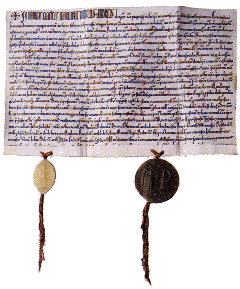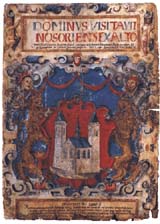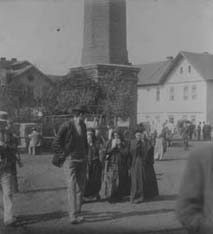History
 The oldest written proof about the existence of
Pribram originates in 1216 when the archbishop of Prague Ondrej III had bought it. In the
reigning period of the Czech King and Emperor of the Holy Roman Empire Charles IV the
archbishop Arnost of Pardubice had in the original wooden stronghold site a stone small
castle constructed, today's heart of Pribram's chateau (Zamecek). It is there where
recently a ceremonial hall and an art gallery are to be found. Here there was a seat of
educational mining equipment, then the Mining Academy and finally the College of Mining
Engineering during 1849 - 1945. Not very far is situated the original Gothic church of
Saint-James belongs to the most The oldest written proof about the existence of
Pribram originates in 1216 when the archbishop of Prague Ondrej III had bought it. In the
reigning period of the Czech King and Emperor of the Holy Roman Empire Charles IV the
archbishop Arnost of Pardubice had in the original wooden stronghold site a stone small
castle constructed, today's heart of Pribram's chateau (Zamecek). It is there where
recently a ceremonial hall and an art gallery are to be found. Here there was a seat of
educational mining equipment, then the Mining Academy and finally the College of Mining
Engineering during 1849 - 1945. Not very far is situated the original Gothic church of
Saint-James belongs to the most  ancient buildings with its foundations from the
half 13th century which after many rebuildings is the dominating subject in T.G.Masaryk's
Square. ancient buildings with its foundations from the
half 13th century which after many rebuildings is the dominating subject in T.G.Masaryk's
Square.
Pribram entered the general awareness through its famous mining past. Mining activities
have been existing here according to the archeological discoveries since 10th century. The
oldest written source about the local metallurgical plant and mines is from 1311. Apart
from the traditional silver mining also iron ore was extracted and treated in the region
of Pribram during 10th – 19th centuries, in some periods it represented even nearly a
half of the whole country capacity. Silver mining made up the first boom from the 30's
till the 50's of 16th century. The economic development was noticed the by Emperor Rudolf
II and he reacted by promoting Pribram in 1579 to a free royal mining town. Brezove Hory,
once miners' settlement, remembered in written sources about 1526, got this title in 1897.
In 1953 there was established the integration of Brezove Hory with Pribram. The biggest
development of silver mining activities came in 19th century. In 1875 in the pit of
Adalbert there was reached the world primacy of vertical dept of 1000 m with one cable.

Silver, lead and other precious metals in the region of Pribram
represented in the 80's and the 90's of 19th century 97.7 % of the total Austro-Hungarian
production. But the activity in local mines brought also a tragic primacy. In 1892 it came
to the worst mine disaster of that time in the world, which claimed 319 human lives.
Silver mining extraction went on with different successes even during 20th century. The
successor company "Rudne doly Pribram" (Metal mines of Pribram) closed the local
ore field for reasons in 1979.

 The
most important industrial company in the history of the town and region was "Uranove
doly Pribram" (Uranium mines of Pribram). The extraction of an extremely uranium ore
field brought to Pribram since 1948 the rapid development, which impressed in a positive
and negative sense the town as well the region. The uranium mines ended their mining
activities for economic purpose in 1991. The former glory of Pribram's mining activities
is remembered by the District Museum – Mining open-air museum in Brezove Hory. The
most important industrial company in the history of the town and region was "Uranove
doly Pribram" (Uranium mines of Pribram). The extraction of an extremely uranium ore
field brought to Pribram since 1948 the rapid development, which impressed in a positive
and negative sense the town as well the region. The uranium mines ended their mining
activities for economic purpose in 1991. The former glory of Pribram's mining activities
is remembered by the District Museum – Mining open-air museum in Brezove Hory.
Pribram can be proud of a certain number of other monuments, of rich cultural and sporting
activities, association activities etc., which create a characteristic face of this
important town in the heart of Bohemia.
|

